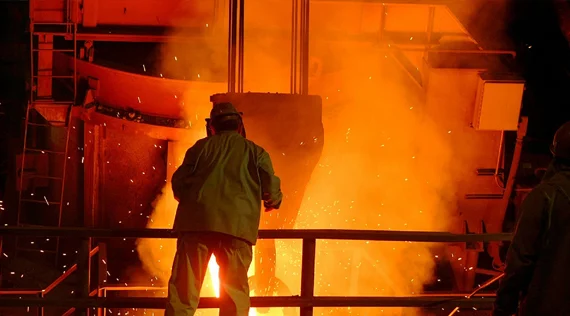Green Steel is Distant and Expensive, But Teal Steel is Coming: Russell
Steel News | 2025-05-29 12:25:55
The current iron ore and steel market dynamics illustrate the scale of the challenge.
SEATTLE (Scrap Monster): There is a conundrum in plans to decarbonise the steel sector.
It's entirely feasible with current technologies, but also wholly unlikely because of the massive cost of deploying them.
The steel chain from iron ore mining through to finished products accounts for about 8% of global carbon emissions, and reducing this impact is often viewed as vital to combating climate change.
If there was a consensus at the gathering of the iron ore and steel industry this week at the Singapore International Ferrous Week, it's that cutting emissions from steel-making is entirely possible.
But what was also obvious is that while miners and steel makers are in the early stages of transitioning, the process will be slow and massively expensive.
The major problem with this is nobody is sure who is going to pay.
Australia's iron ore miners, who supply about two-thirds of China's imports, are capable of building a green iron supply chain, which would use solar and wind energy to create green hydrogen, which would then be used to beneficiate iron ore into direct reduced iron (DRI) and hot-briquetted iron (HBI).
Using HBI cuts out about 80% of the emissions created in the entire steel-making process by eliminating the current practice of using coal to turn iron ore into pig, or crude, iron by removing oxygen and other impurities.
But the iron ore miners won't invest the billions of dollars needed to build green iron plants unless China, which makes about half of the world's steel, and other major producers such as South Korea, Japan and India, commit to using the cleaner product.
At the heart of the problem is cost. Using hydrogen to make green iron and an EAF to turn that into steel can reduce the emissions from around 1.8 metric tons of carbon to as low as 200 kilograms per ton of steel.
While estimates of the cost vary, the consensus is that even a green steel supply chain built at scale would result in a near doubling of the cost of making a ton of steel compared with the coal-intensive current method of using a blast furnace and a basic oxygen furnace (BF-BOF).
It's likely that steel mills will be unwilling to see their costs rise so dramatically, as it would be challenging to pass the higher prices fully on to consumers.
The current iron ore and steel market dynamics illustrate the scale of the challenge.
Chinese steel mills are struggling for profitability, and one way they try to cut costs is to increase the share of low-grade, and cheaper, iron ore in their production.
This lowers the cost of the steel produced, but also raises the carbon intensity to about 2.2 tons per ton of steel produced, up from about 1.8 tons if high-grade iron ore is used in the BF-BOF process.
In other words, green steel ambition is likely to be sacrificed on the altar of economics.
Courtesy: www.reuters.com
 By
By 